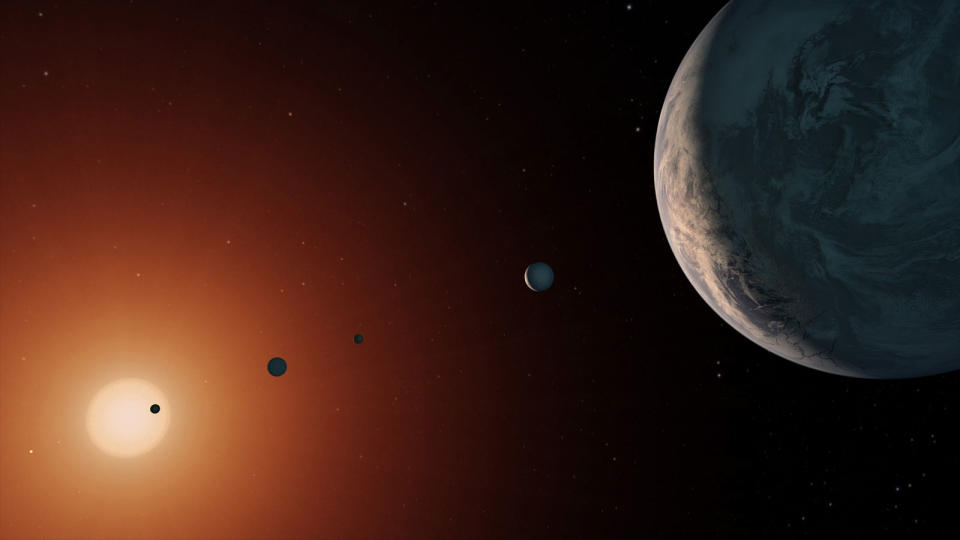The TRAPPIST-1 star system may be too old for life
It's up to twice as old as the Solar System.
We hate to further quash hopes that the TRAPPIST-1 star system can harbor life, but... it's not looking great. Researchers have determined that the dwarf star is between 5.4 billion years old and 9.8 billion years old, or considerably older than the 4.5 billion years of the Solar System. That age isn't necessarily bad, but it increases the likelihood that any life-supporting planets around TRAPPIST-1 lost their atmospheres and water to billions of years of high-energy radiation. And even if their atmospheres were thick enough to block the radiation, there's a possibility that a Venus-like runaway greenhouse gas effect cooked the planets' surfaces.
As the team's Adam Burgasser explains: if there is life, it's the "hardy" sort. It would have to survive extreme conditions for billions of years, he says. The upshot? If there is life, humans will have plenty of time to find it. A dwarf like TRAPPIST-1 is so stable that it should last for 900 times longer than the current age of the universe (around 13.7 billion years), and its temperature will be very consistent throughout that time.
The big challenge is using the Hubble and James Webb telescopes to learn whether or not any of the planets have atmospheres like Earth's. If they do, knowing the rough age of the star will come in handy. It'll shed more light on how atmospheres evolve, and how long they can last in systems that are far older than humanity's home turf.


